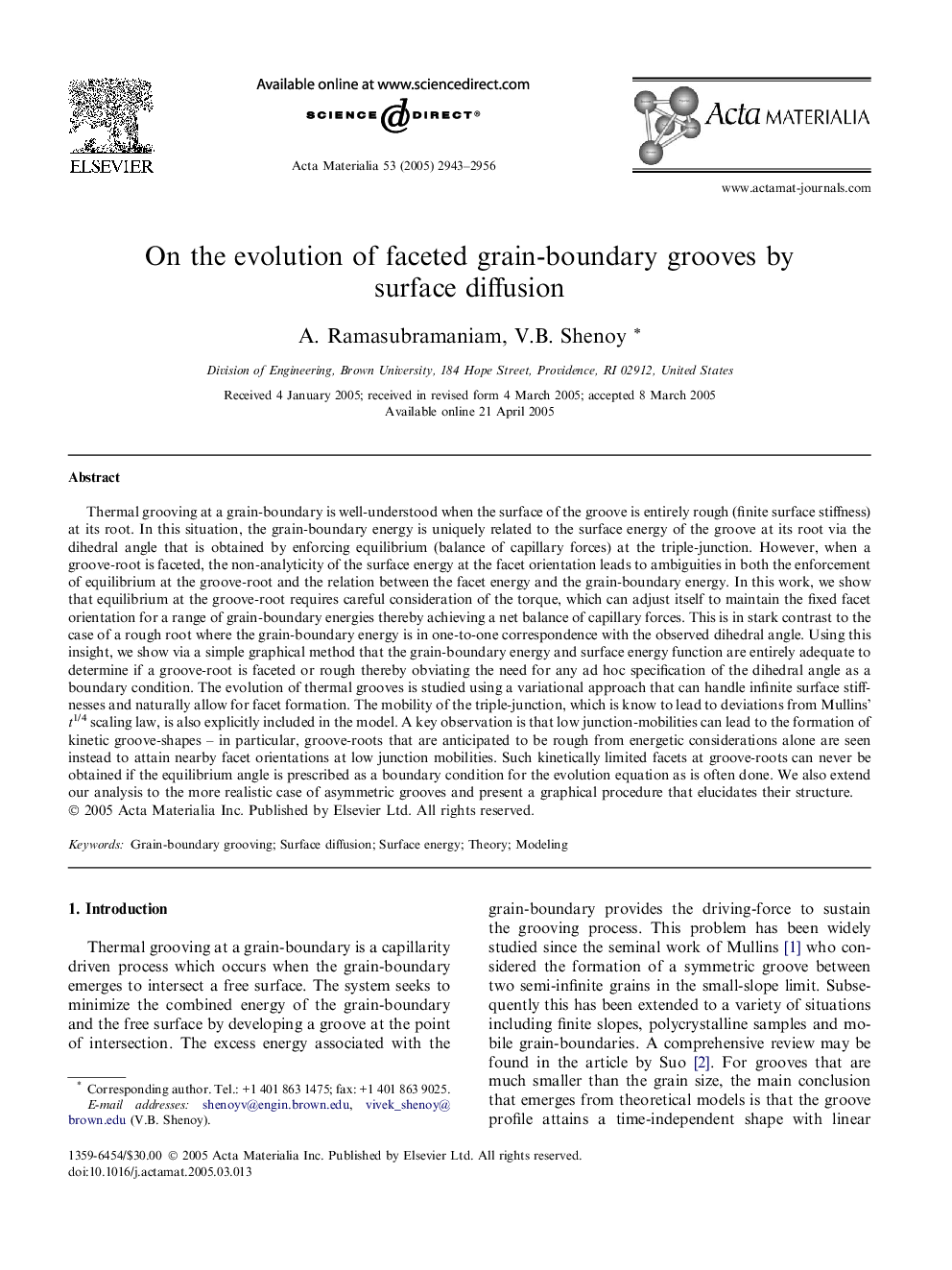| کد مقاله | کد نشریه | سال انتشار | مقاله انگلیسی | نسخه تمام متن |
|---|---|---|---|---|
| 1451268 | 988766 | 2005 | 14 صفحه PDF | دانلود رایگان |

Thermal grooving at a grain-boundary is well-understood when the surface of the groove is entirely rough (finite surface stiffness) at its root. In this situation, the grain-boundary energy is uniquely related to the surface energy of the groove at its root via the dihedral angle that is obtained by enforcing equilibrium (balance of capillary forces) at the triple-junction. However, when a groove-root is faceted, the non-analyticity of the surface energy at the facet orientation leads to ambiguities in both the enforcement of equilibrium at the groove-root and the relation between the facet energy and the grain-boundary energy. In this work, we show that equilibrium at the groove-root requires careful consideration of the torque, which can adjust itself to maintain the fixed facet orientation for a range of grain-boundary energies thereby achieving a net balance of capillary forces. This is in stark contrast to the case of a rough root where the grain-boundary energy is in one-to-one correspondence with the observed dihedral angle. Using this insight, we show via a simple graphical method that the grain-boundary energy and surface energy function are entirely adequate to determine if a groove-root is faceted or rough thereby obviating the need for any ad hoc specification of the dihedral angle as a boundary condition. The evolution of thermal grooves is studied using a variational approach that can handle infinite surface stiffnesses and naturally allow for facet formation. The mobility of the triple-junction, which is know to lead to deviations from Mullins’ t1/4 scaling law, is also explicitly included in the model. A key observation is that low junction-mobilities can lead to the formation of kinetic groove-shapes – in particular, groove-roots that are anticipated to be rough from energetic considerations alone are seen instead to attain nearby facet orientations at low junction mobilities. Such kinetically limited facets at groove-roots can never be obtained if the equilibrium angle is prescribed as a boundary condition for the evolution equation as is often done. We also extend our analysis to the more realistic case of asymmetric grooves and present a graphical procedure that elucidates their structure.
Journal: Acta Materialia - Volume 53, Issue 10, June 2005, Pages 2943–2956